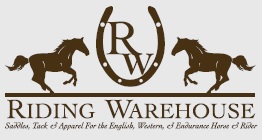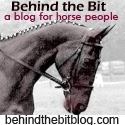
When I was competing in dressage, I spent a lot of time learning the arena geometry and the tests. It may seem like overkill, but it did help my scores, and more importantly, it improved my confidence going into the ring. The better I know the test and the logistics, the more I can concentrate on riding.
Preparing for a test
A dressage rider, trainer, and L judge offered me these suggestions about preparing for a dressage test. Her advice is in italics, my comments are plain text:
- A really awful moment in a test may not affect your overall score. One low score won't lower your overall score by much. I remembered this advice when Harvey got second place to a horse that reared at the first "halt at x." Actually he reared twice in the same movement, going waaay up both times. Harvey put in a compliant test and got a good score. I have to admit I was indignant that he placed below a very naughty horse. I was trailered next to the winning rider, and she was as surprised as anyone to win the class. She shared her test scores with me. Her halt score was low, but after the halt the horse must have settled into his work, because there were 7s for movements with coefficients, and an 8 for gaits.
- Nail the movements with the coefficients/weighting. This is kind of apparent, you wanna do good on the scores that are weighted more heavily.
- If you go off course, do not circle before you continue. Go straight into the movement or you'll get more errors. This is a deeply ingrained tendency for me, perhaps dating back to my days riding hunters.
- Don't go off course!Know your test backwards and forwards. Practice it under saddle, on paper, and in your head. As you start to learn the movement sequence, start planning the ride. Throw in things like half halts, likely "tricks" your horse might pull (and your solutions). For example I would practice my test in my head: "Halt at X, salute, trot toward judge. Harvey spooks at the judge so here I need to keep him in front of my leg, sit back and use strong half halts. Then track left, half halt in corner..." and so on.
- Unless you have a documented brain disorder, you should not need a reader. Relying on a reader is a distraction that could prevent you from focusing on your horse and your riding. Also you're in trouble if high wind, low flying planes, intercom announcements, and other background noises prevent you from hearing the reader.
- Whatever else goes wrong, ride an accurate test. Some judges are sticklers for accuracy and will really mark down a sloppy movement. A lovely 17 meter circle that is supposed to be a 20 meter circle may cost you points. Remember that a movement starts at the point your horse's shoulder crosses the letter, and that when performing a circle you only "touch" the side of the arena. A common mistake is to stay too long on the track.
- Practice the test in an actual dressage arena, preferably one that is the same size as the show arena. My very first dressage show was in a 20X40m ring. My home ring was 20X60, and I was accustomed to a leisurely progression from movement to movement. In the small ring, the movements come up fast. Ride the whole test as many times as possible in the weeks/days before the show.
The dressage ring: Know every footfall
If you want to nail points for accuracy, it'll help to have a strong sense of a)where you and your horse should be going, and b) when to start a movement or a turn in a movement. That's the rationale for knowing the measurements, the letters, and where the movements occur in the arena.
Riding Circles from HorseOz
http://www.horseoz.com/riding_articles/Riding_Circles/riding_circles.html
A guide for sticklers and perfectionists on how to ride circles, serpentines, and corners. Thanks Wiola for suggesting this awesome link!
My dressage arena diagrams
My early dressage tests included comments about accuracy, and they weren't good comments. To see the lengths I went to to correct this, I bring you Exhibit A (below). You can click on the image to view and download the full-sized image.
 | This guide is the same as above but it lays out exactly how to do an accurate serpentine. |
 | The dark circles to your left can be cut out and placed on the first dressage ring, for a meter by meter analysis of 10 and 20 meter circles no matter where they take place in the arena. |
Dressage Arena Diagrams
http://www.dressagearena.net/pages/arena_diagrams.html
More dressage arena diagrams; these are for purchase.
Wikipedia Dressage Arena image
http://en.wikipedia.org/wiki/Image:Dressage_ring_schema.svg
Dressage Letter Mneumonics
http://www.dressageamerica.com/dressage_arena_new.htm
Study help for dressage ring letters!
Where did dressage ring letters come from? Yahoo Answers
http://answers.yahoo.com/question/index?qid=20070620135038AAsbOzx
It's a precise answer, not sure how accurate it is.
Advice for riding an accurate test
http://www.arabianhorsenewspaper.com/ARTICLES_ask%20clare.html
Dressage Ring Eraserboard
http://www.letterperfectproducts.com/
Looks pretty useful. I just photocopied my own diagrams and practiced on paper. It helped!










Hello! Just a word to say I have enjoyed reading the above :)
ReplyDeleteThere is an interesting link on arena dimension here:
http://www.horseoz.com/riding_
articles/Riding_Circles/
riding_circles.html
I shall be back to read more :)
I have just added some new diagrams on this page :
ReplyDeletehttp://www.dressage.net.au/dnlinks36.html
hopefully they can be usefull
DD